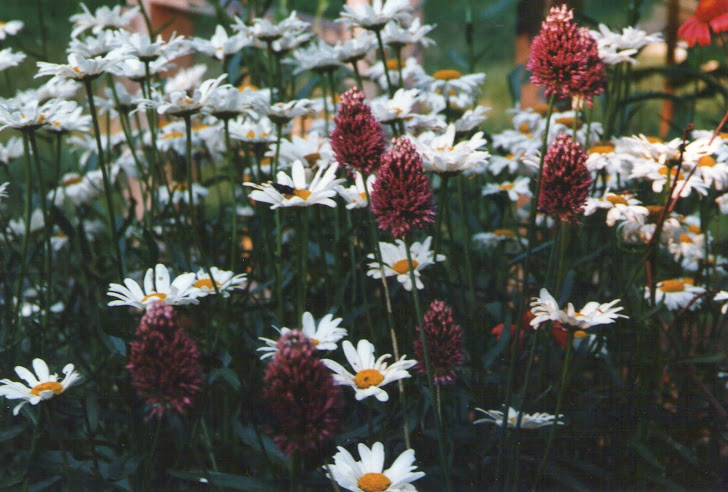Textured plants and "garden art" make good companions. Piggy looks so comfy!
A pot adds another textural element as well as space for more plants.
 There are fewer long-flowering choices for shade, so texture is a must. Hostas come in nearly every combination of size, shape, color and texture you could hope for.
There are fewer long-flowering choices for shade, so texture is a must. Hostas come in nearly every combination of size, shape, color and texture you could hope for.Contrast is key. Tiny foliage, strappy foliage, dark foliage, a few flowers, some rocks and mulch. Suddenly you have a little piece of living art.
So what is texture? I suppose flowers do have texture, but when I think of adding texture as a garden element, I think foliage. The size, shape and feel of a leaf is what gives it its texture. Canna leaves are large and sword-shaped. Boxwood leaves are small and shiny. Leaves can be unbelievably soft and fluffy like lamb's ears or a bit rough and sharp like those of irises. Hosta leaves are described as rounded , pointy, smooth or textured to such an extreme that they resemble corrugated cardboard. Some of my favorite plants have lacy foliage: ferns, cimicifugas (actaea), bleeding hearts, and sambucus. Color is important because it makes the contrast in foliage texture stand out: Imagine a burgundy leaved canna surrounded by the tiny, golden leaves of creeping jenny. Or a rounded-leaved golden hosta amid purple and silver lacy-leaved Japanese painted fern. So whether designing a new garden bed or just adding a few new plants to an already gorgeous garden this Spring: Think Texture and Enjoy!






No comments:
Post a Comment
I would love to read your comments and share them with other gardening enthusiasts! Please share your gardening expertise and stories here!